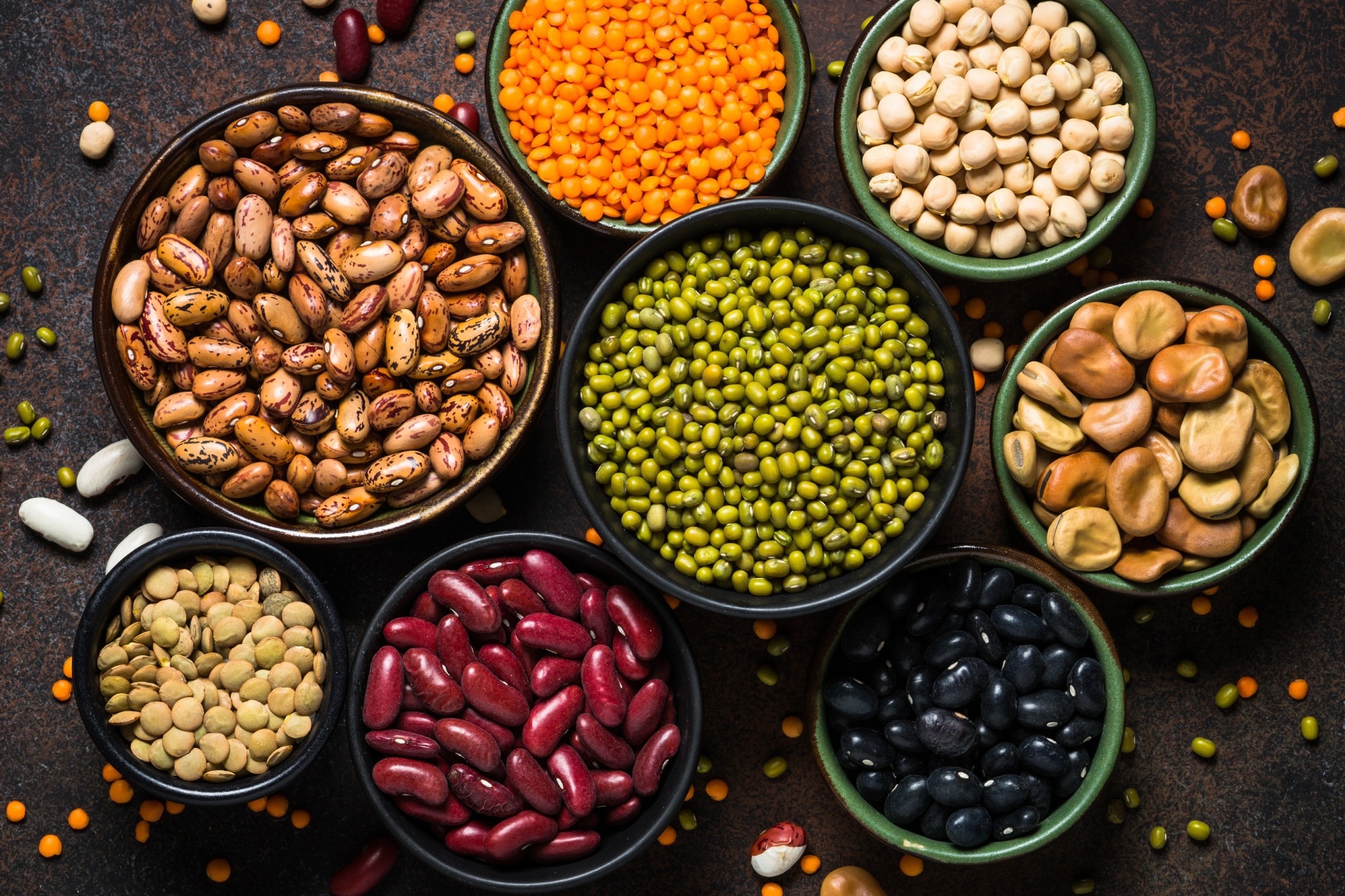In a recent study published in Nutrients, researchers investigated the associations between cardiometabolic risk (CMR) factors and legume intake.
 Study: Associations between Cardiometabolic Risk Factors and Increased Consumption of Diverse Legumes: A South African Food and Nutrition Security Programme Case Study. Image Credit: nadianb/Shutterstock.com
Study: Associations between Cardiometabolic Risk Factors and Increased Consumption of Diverse Legumes: A South African Food and Nutrition Security Programme Case Study. Image Credit: nadianb/Shutterstock.com
Background
Chronic health conditions have been increasingly prevalent in older populations. Farming activities often lead older farmers to skip meals. Moreover, their diets tend to be less diverse, aggravating their already compromised health status.
Hypertension prevalence is high in older people in South Africa. Hypertension could negatively impact their income, farming operations, and well-being.
Hypertension could lead to cramps, fatigue, joint pain, insomnia, memory loss, and eye problems, some of which are linked to high rates of morbidity and mortality. As such, addressing food intake among older farmers could improve their survival.
Legumes are rich in protein, fiber, and minerals and have beneficial health effects. Regular legume intake could help prevent age-associated disorders and improve CMR factors.
About the study
In the present study, researchers developed and implemented a food and nutrition education program to promote the intake of legumes among older farmers with chronic hypertension and elevated glucose and cholesterol levels.
The study intervention was informed by a baseline cross-sectional survey and implemented in experimental (EG) and control (CG) groups.
Participants were selected at an agricultural ecology hub station. This area had a high prevalence of CMR factors and low legume intake among older individuals. Eligible individuals were farmers willing and committed to partaking in all project stages and cultivating legumes on their farms.
Participants were selected for the EG based on their willingness to grow legumes and adhere to dietary guidelines.
The CG was not involved in a legume education program. Participants lacking a balanced diet received healthy eating guideline recommendations.
They were trained in agricultural conservation practices to increase legume production. Different legumes (cowpeas, green mung, red kidney beans, chickpeas, and jugo beans) were introduced for the EG.
EG farmers had to consume 125 grams of legumes per portion three to five times weekly for 12 weeks. CG subjects continued their regular dietary patterns and were unexposed to intervention or education. Anthropometric and sociodemographic data and blood samples were obtained. Glucose and cholesterol levels were estimated.
Dietary intake was measured using a 24-hour intake recall and food frequency questionnaire. Data were collected before and after the intervention to examine patterns of legume intake.
A dietary diversity score (DDS) was computed as an aggregate of food groups consumed in a week. A two-way analysis of variance (ANOVA) was performed to compare pre-and post-intervention CMR variables between groups.
Findings
The study recruited 53 and 50 participants into EG and CG, with an average age of 63.3 and 67.9, respectively. Females constituted most of the sample and had a significantly higher energy intake post-intervention phase. While males, too, demonstrated higher post-intervention energy intake, it was not statistically significant.
Further, there was a significant post-intervention improvement in the intake of macronutrients (protein, fat, fiber, and carbohydrates) among females; no significant differences were observed for males. There were no significant changes in DDSs between pre- and post-intervention phases for either group.
Nevertheless, the legume food group diversity score (FGDS) increased significantly from 2.4 in the pre-intervention phase to 5.7 in the post-intervention phase. The FGDS of the three food groups was significantly lower in the EG than in the CG post-intervention.
No significant group differences were observed for CMR variables, except for diastolic blood pressure (DBP) in the EG, which remained significantly lower pre-intervention.
ANOVA indicated a significant difference in systolic blood pressure between EG and CG. Blood glucose levels improved significantly in the EG post-intervention.
Besides, the mean total cholesterol (TC) was significantly lower in the EG post-intervention. Hyperglycemia in the EG decreased (from 38%) to 9% post-intervention. There were no differences in TC in the CG.
Conclusions
The findings highlight significant improvements in nutrient adequacy ratios (NARs), legume FGDS, DBP, and glucose and cholesterol levels in the EG.
Addressing CMR-related concerns requires extensive surveillance, and older farmers should be capacitated to adopt sustainable production and consumption of legumes.
Overall, interventions focused on legumes can expedite (attaining) some sustainable development goals through community-based programs.
Journal reference:
-
Mkhize X, Oldewage-Theron W, Napier C, Duffy KJ. (2024) Associations between Cardiometabolic Risk Factors and Increased Consumption of Diverse Legumes: A South African Food and Nutrition Security Programme Case Study, Nutrients. doi: 10.3390/nu16030354. https://www.mdpi.com/2072-6643/16/3/354